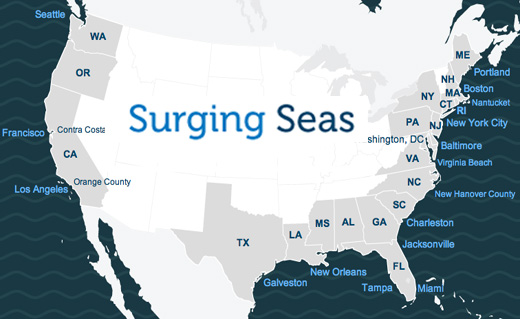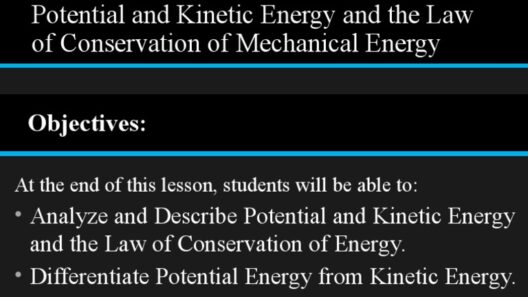As we delve into the mysteries of renewable energy, one must ponder: can tidal energy truly be conserved? This question opens a Pandora’s box of considerations regarding the interaction between nature’s rhythms and human ingenuity. Tidal energy, derived from the gravitational forces exerted by the moon and the sun, presents an intriguing opportunity for sustainable power generation. However, understanding its conservation is pivotal to maximizing its benefits.
The ocean, with its vast expanse, functions like a colossal clockwork, driving a ceaseless cycle of ebb and flow. Each tidal cycle is not merely a whimsical dance of waters but a powerful source of energy that, if harnessed correctly, can significantly contribute to our energy mix. So, how can society engage with this natural phenomenon to ensure not just immediate gains, but also long-term sustainability? This inquiry propels us into the realms of technology, ecological balance, and sociopolitical frameworks.
Firstly, it is imperative to recognize that tidal energy generation is fundamentally reliant on two critical phenomena: tidal currents and tidal heights. Tidal currents, driven by the gravitational pull of celestial bodies, create movement in the water that can be harnessed using underwater turbines. Conversely, tidal heights, or the differential between high and low tides, can be utilized through tidal barrages—structures that harness water flow to generate power. Both these methods showcase the dynamic nature of tidal energy. However, the question of conservation emerges; how do we prevent the over-extraction of this energy source, preserving the delicate equilibrium of marine ecosystems?
To effectively conserve tidal energy, one must consider the implementation of innovative technologies alongside traditional methodologies. For instance, current advancements in turbine design aim to reduce environmental impact while maximizing energy output. These innovations often utilize bi-directional systems that can produce energy during both the incoming and outgoing tides, thus enhancing efficiency. Furthermore, the application of sensor networks and monitoring systems can yield crucial data that helps to balance energy extraction with ecological health.
Moreover, the notion of decentralized energy generation is gaining traction within tidal energy discussions. By utilizing smaller scale, localized tidal systems, communities can tap into the ocean’s clockwork without overwhelming it. This strategy not only empowers local communities but also mitigates the environmental strain typically associated with large-scale energy plants. Envision a future where coastal towns operate on the tides, embracing self-sufficiency while respecting maritime ecosystems. But can such a model withstand the challenges of economic viability and technological accessibility?
Another layer of complexity arises when discussing conservation in a societal context. Public perception and policy frameworks significantly influence the deployment of tidal energy projects. Historical skepticism towards renewable energies often stems from perceived impacts on local environments and communities. Hence, early consultations with stakeholders and engaging with communities is crucial. Educative initiatives that elucidate the science behind tidal energy might foster broader acceptance and spur collaborative conservation efforts. Can we transform skepticism into advocacy for tidal energy through informed community engagement?
Ecological considerations play a paramount role in the conservation of tidal energy systems. The implementation of rigorous environmental assessments can provide insights into potential impacts on marine life, sediment transport, and coastal dynamics. Responsible management practices, such as selective site selection for installations and sustained monitoring, can safeguard biological habitats from disruption. Dialogue among environmental scientists, engineers, and policymakers is essential in aligning energy production with conservation goals. Are we prepared to adopt a multi-disciplinary approach that integrates ecological science with energy engineering?
Unquestionably, the colossal potential embedded within tidal energy cannot be fully unlocked without addressing infrastructural challenges. Coastal regions often require substantial investment to develop the necessary frameworks to support tidal energy projects. Those investments must balance the financial returns with the long-term benefits to society and the environment. Could creative financing solutions, like public-private partnerships, emerge as a viable pathway to foster necessary investments in tidal energy infrastructure?
On the global front, international collaboration also holds the key to overcoming common challenges faced by tidal energy projects. Countries with diverse tidal patterns and technologies might share insights and best practices. Multi-national initiatives could lead to unprecedented efficiencies and innovations, pushing the boundaries of what tidal energy can achieve. Will global cooperation on tidal energy evolve to recognize its importance for climate resilience and energy security?
In conclusion, as we navigate the sea of possibilities that tidal energy offers, the challenge of conservation looms large. While the potential for harnessing this natural resource is immense, balancing energy extraction with ecological integrity is paramount. Engaging the community, leveraging technological advancements, and fostering international collaboration are all crucial steps toward ensuring that the ocean’s rhythms can contribute to our energy needs without being depleted. Perhaps, the real question isn’t whether tidal energy can be conserved, but rather how effectively we can harness nature’s oceanic clockwork to build a sustainable future. The tides are waiting to reveal their secrets; we must be ready to listen and act wisely.








